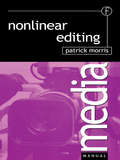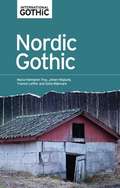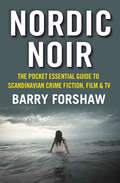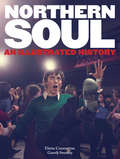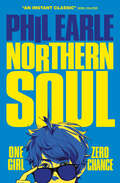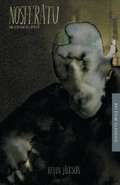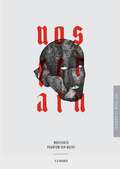- Table View
- List View
Nonlinear Editing (Media Manuals Ser.)
by Patrick MorrisNonlinear is a buzzword for every broadcaster and facility house worldwide. Systems range from the humble to the exotic, and despite the growing acceptance of the technology, many users, both new and experienced, find the complexity of the operation and the time spent loading the material and rendering effects difficult to manage at first. Non-linear editing also comes with its own specialist language, requiring each editor to be conversant with a new range of skills from day one. As desktop systems improve the role of the traditional editor is constantly evolving and expanding. This is an operational manual for professional trainees and students in the post-production industry. It will also serve as a useful reference tool for producers and directors. Written in a concise and clear manner, the book serves as a practical guide to the efficient management and operation of non-linear editing systems. It describes the technology involved, the essential techniques to be mastered including on-line and off-line editing, project management, rendering effects, working with graphics and audio, and adding third party applications. Designed for quick and easy reference, this is a practical user guide to non-linear editing that comes complete with an extensive jargon buster that will get you fully conversant with the technology in a short space of time.Patrick Morris is a Trainer in Post-Production for the Television Corporation of Singapore and the Singapore Broadcasting Authority as well as Chairman of the South East Asia User Group. He is an AVID Certified Trainer with a working knowledge of Lightworks, Media 100, Quantel, D Vision and other systems. Formerly a consultant and Senior Editor for BBC, ITV and SKY TV, he also spent many years a Training Manager for BBC Wood Norton and as Senior Video-Tape Editor for Television South West.
Nonlinear Editing
by Patrick MorrisNonlinear is a buzzword for every broadcaster and facility house worldwide. Systems range from the humble to the exotic, and despite the growing acceptance of the technology, many users, both new and experienced, find the complexity of the operation and the time spent loading the material and rendering effects difficult to manage at first. Non-linear editing also comes with its own specialist language, requiring each editor to be conversant with a new range of skills from day one. As desktop systems improve the role of the traditional editor is constantly evolving and expanding. This is an operational manual for professional trainees and students in the post-production industry. It will also serve as a useful reference tool for producers and directors. Written in a concise and clear manner, the book serves as a practical guide to the efficient management and operation of non-linear editing systems. It describes the technology involved, the essential techniques to be mastered including on-line and off-line editing, project management, rendering effects, working with graphics and audio, and adding third party applications. Designed for quick and easy reference, this is a practical user guide to non-linear editing that comes complete with an extensive jargon buster that will get you fully conversant with the technology in a short space of time.Patrick Morris is a Trainer in Post-Production for the Television Corporation of Singapore and the Singapore Broadcasting Authority as well as Chairman of the South East Asia User Group. He is an AVID Certified Trainer with a working knowledge of Lightworks, Media 100, Quantel, D Vision and other systems. Formerly a consultant and Senior Editor for BBC, ITV and SKY TV, he also spent many years a Training Manager for BBC Wood Norton and as Senior Video-Tape Editor for Television South West.
Nonprofessional Film Performance (Palgrave Close Readings in Film and Television)
by Miguel GaggiottiThis book offers a critical account of film performances by nonprofessional actors. Nonprofessional actors — actors without previous acting training or experience — have performed in films since the days of the Lumière brothers. Generally associated with currents such as Early Soviet Cinema, Italian Neorealism and New Argentine Cinema, nonprofessional actors also feature prominently in the works of celebrated directors including Pier Paolo Pasolini, Robert Bresson and Joanna Hogg. Since the turn of the century and the rise of digital filmmaking, the performances of nonprofessional actors have remained a staple of independent cinemas from all over the world, including films associated with the loose trend often referred to as Slow Cinema. Despite their enduring presence in acclaimed and widely discussed films, nonprofessional actors have received scant scholarly attention. This book proposes to analyse exemplary nonprofessional performances from across the history of cinema as a means of illuminating their significance and celebrating the performers’ contributions to the films.
Nordic Dance Spaces: Practicing and Imagining a Region (The Nordic Experience)
by Petri HoppuDance has been connected to the practices and ideologies that have shaped notions of a Nordic region for more than a century and it is ingrained into the culture and society of the region. This book investigates different dance phenomena that have either engaged with or dismantled notions of Nordicness. Looking to the motion of dancers and dance forms between different locations, organizations and networks of individuals, its authors discuss social dancing, as well as historical processes associated with collaborations in folk dance and theatre dance. They consider how similarities and differences between the Nordic countries may be discerned, for instance in patterns of reception at the arrival of dance forms from outside the Nordic countries - and vice versa, how dance from the Nordic countries is received in other parts of the world, as seen for example in the Nordic Cool Festival at the Kennedy Centre in 2013. The book opens a rare window into Nordic culture seen through the prism of dance. While it grants the reader new insights into the critical role of dance in the formation and imagining of a region, it also raises questions about the interplay between dance practices and politics.
Nordic Dance Spaces: Practicing and Imagining a Region (The Nordic Experience #4)
by Petri HoppuDance has been connected to the practices and ideologies that have shaped notions of a Nordic region for more than a century and it is ingrained into the culture and society of the region. This book investigates different dance phenomena that have either engaged with or dismantled notions of Nordicness. Looking to the motion of dancers and dance forms between different locations, organizations and networks of individuals, its authors discuss social dancing, as well as historical processes associated with collaborations in folk dance and theatre dance. They consider how similarities and differences between the Nordic countries may be discerned, for instance in patterns of reception at the arrival of dance forms from outside the Nordic countries - and vice versa, how dance from the Nordic countries is received in other parts of the world, as seen for example in the Nordic Cool Festival at the Kennedy Centre in 2013. The book opens a rare window into Nordic culture seen through the prism of dance. While it grants the reader new insights into the critical role of dance in the formation and imagining of a region, it also raises questions about the interplay between dance practices and politics.
Nordic Genre Film: Small Nation Film Cultures in the Global Marketplace (Traditions in World Cinema)
by Tommy Gustafsson Pietari KääpäNordic Genre Film offers a transnational approach to studying contemporary genre production in Nordic cinema. It discusses a range of internationally renowned examples, from Nordic noir such as the television show The Bridge and films like Insomnia to high concept ‘video generation’ productions such as Iron Sky. Other contributions focus on road movies, the horror film, autobiographical films, historical epics and pornography. These are contextualized by discussion of their position in their respective national film and media histories as well as their influence on other Nordic countries and beyond. By highlighting similarities and differences between the countries, the book combines industrial perspectives and in depth discussion of specific films, while also offering historical perspectives on each genre as comes to production, distribution and reception of popular contemporary genre film.
Nordic Genre Film: Small Nation Film Cultures in the Global Marketplace (Traditions in World Cinema)
by Tommy Gustafsson Pietari KääpäNordic Genre Film offers a transnational approach to studying contemporary genre production in Nordic cinema. It discusses a range of internationally renowned examples, from Nordic noir such as the television show The Bridge and films like Insomnia to high concept ‘video generation’ productions such as Iron Sky. Other contributions focus on road movies, the horror film, autobiographical films, historical epics and pornography. These are contextualized by discussion of their position in their respective national film and media histories as well as their influence on other Nordic countries and beyond. By highlighting similarities and differences between the countries, the book combines industrial perspectives and in depth discussion of specific films, while also offering historical perspectives on each genre as comes to production, distribution and reception of popular contemporary genre film.
Nordic Gothic (International Gothic Series)
by Jerrold HogleNordic Gothic traces Gothic fiction in the Nordic region from its beginnings in the nineteenth century, with a main focus on the development of Gothic from the 1990s onwards in literature, film, TV and new media. The volume gives an overview of Nordic Gothic fiction in relation to transnational developments and provides a number of case studies and in-depth analyses of individual narratives. It creates an understanding of this under-researched cultural phenomenon by showing how the narratives make visible cultural anxieties haunting the Nordic countries, their welfare systems, identities and ideologies. Nordic Gothic examines how figures from Nordic folklore function as metaphorical expressions of Gothic themes and Nordic settings are explored from perspectives such as ecocriticism and postcolonialism. The book will be of interest to researchers and post- and- undergraduate students in various fields within the Humanities.
Nordic Gothic (International Gothic Series)
by Johan Höglund Yvonne Leffler Maria Holmgren Troy Sofia WijkmarkNordic Gothic traces Gothic fiction in the Nordic region from its beginnings in the nineteenth century, with a main focus on the development of Gothic from the 1990s onwards in literature, film, TV and new media. The volume gives an overview of Nordic Gothic fiction in relation to transnational developments and provides a number of case studies and in-depth analyses of individual narratives. It creates an understanding of this under-researched cultural phenomenon by showing how the narratives make visible cultural anxieties haunting the Nordic countries, their welfare systems, identities and ideologies. Nordic Gothic examines how figures from Nordic folklore function as metaphorical expressions of Gothic themes and Nordic settings are explored from perspectives such as ecocriticism and postcolonialism. The book will be of interest to researchers and post- and- undergraduate students in various fields within the Humanities.
Nordic National Cinemas
by Gunnar Iverson Astrid Soderbergh Widding Tytti SoilaNordic National Cinemas explores the film histories and cultures of Denmark, Finland, Iceland, Norway and Sweden. The authors examine each country's domestic film production, social and political context and domestic audiences from the beginning of this century to the twentieth century.The authors not only explore the work of internationally renowned figures such as Mauritz Stiller, Victor Sjostrom, Carl Dreyer and Ingmar Bergman, directors of such classics as Vampyr, Ordet, Wild Strawberries and Cries and Whispers, but also nationally important film makers such as August Blom, Bodil Ipsen, Lau Lauritzen and Nils Malmros, they also discuss contemporary film makers including Gabriel Axel, director of Babette's Feast, the Kaurismaki brothers, directors of The Match Factory Girl and The Leningrad Cowboys and the recently acclaimed Lars von Trier, director of Breaking the Waves.
Nordic National Cinemas
by Gunnar Iverson Astrid Soderbergh Widding Tytti SoilaNordic National Cinemas explores the film histories and cultures of Denmark, Finland, Iceland, Norway and Sweden. The authors examine each country's domestic film production, social and political context and domestic audiences from the beginning of this century to the twentieth century.The authors not only explore the work of internationally renowned figures such as Mauritz Stiller, Victor Sjostrom, Carl Dreyer and Ingmar Bergman, directors of such classics as Vampyr, Ordet, Wild Strawberries and Cries and Whispers, but also nationally important film makers such as August Blom, Bodil Ipsen, Lau Lauritzen and Nils Malmros, they also discuss contemporary film makers including Gabriel Axel, director of Babette's Feast, the Kaurismaki brothers, directors of The Match Factory Girl and The Leningrad Cowboys and the recently acclaimed Lars von Trier, director of Breaking the Waves.
Nordic Noir: The Pocket Essential Guide to Scandinavian Crime Fiction, Film & TV
by Barry ForshawNordic Noir: The Pocket Essential Guide to Scandinavian Crime Fiction, Film and TV by Britain's leading expert on crime fiction, Barry Forshaw, is a compact and authoritative guide to the phenomenally popular genre.The information-packed study examines and celebrates books, films and TV adaptations, from Sjöwall & Wahlöö's highly influential Martin Beck series through Henning Mankell's Wallander (subject of three separate TV series) to Stieg Larsson's groundbreaking The Girl with the Dragon Tattoo, cult TV hits such as the Danish The Killing, The Bridge, and the political thriller Borgen, up to the massively successful books and films of the current king of the field, Norway's Jo Nesbo. Nordic Noir anatomises the nigh-obsessive appeal of the subject and highlights every key book, film and TV show. For both the beginner and the aficionado, this is a hugely informative, highly accessible guide (and shopping list) for an essential crime genre.'Entertaining and informative companion ... written by the person who probably knows more than anyone alive about the subject' - The Times'Readers wanting to get into Scandinavian crime fiction should start with Forshaw's pocket guide to the genre' - Financial TimesLook out for the other books in Barry Forshaw's Noir series Euro Noir, Brit Noir, American Noir and Historical Noir, and for his latest book, Crime Fiction: A Reader's Guide.
Nordic Noir, Adaptation, Appropriation (Palgrave Studies in Adaptation and Visual Culture)
by Andrew Nestingen Linda Badley Jaakko SeppäläThis book argues that adaptation is an underrecognized yet constitutive element of Nordic noir. In so doing, it reframes the prevailing critical view. Now celebrated for its global sweep, Nordic noir is equally a transmedial phenomenon. Nordic Noir, Adaptation, Appropriation deploys the tools of current adaptation studies to undertake a wide-ranging transcultural, intermedial exploration, adding an important new layer to the rich scholarship that has arisen around Nordic noir in recent years.
Nordic Perspectives on the Discourse of Things: Sakprosa Texts Helping Us Navigate and Understand an Ever-changing Reality
by Catharina Nyström Höög Henrik Rahm Gøril Thomassen HammerstadThis open access book deals with the role of written texts in an increasingly diverse and dynamic society, bringing together a series of studies anchored in the Scandinavian research tradition of sakprosa, which roughly translates as ‘subject-oriented prose’ or ‘professional communication’. The authors examine the written text’s capacity to transcend contextual boundaries, as a crucial factor in the importance of capturing and maintaining content as a manageable entity. The chapters each deal with a text type that manages complex content in a specialized way, including genre shifting in CSR reports, discourse networks in modern digital culture, digital and social media crisis communication, and epistemic positions in non-fiction. This book is relevant to fields such as text research, professional/digital communication, discourse analysis and literacy studies, and may also be of interest to disciplines such as history, rhetoric, organization studies, media studies/journalism, and linguistics.
Norman McLaren: Between the Frames (Animation: Key Films/Filmmakers)
by Nichola DobsonAnimator Norman McLaren is best known for his experimental films using pioneering techniques and his work as founder of the animation department of the National Film Board of Canada (NFB), but little mention is made of his Scottish heritage or his personal life. Nichola Dobson examines some of the key events and people in his life through a close examination of his key works and his personal papers, and discusses how influential they were. By using archive material to discover his personal identity and close readings of his films, Norman McLaren rediscovers one of the most important figures in animation history.Divided into thematic chapters of significant areas of influence, Dobson analyzes his formative years growing up in Scotland and his relationship with fellow Scot, John Grierson; the international travel which influenced him politically and creatively; the creative arts which played a vital part of his life; his collaborations with other artists and his complex, and rarely discussed, personal life. Each of these chapters considers his key films during those periods with a close detailed analysis and a further examination of his life through his correspondence with family and close friends. By featuring this previously un-published material, the book allows much of the consideration of the work to be in McLaren's own words and offers a deep insight into his vast output of films over nearly 50 years.
The North East of England on Film and Television
by James LeggottThis book analyses the representation of North-East England in film and television. It is a response to the way a number of important British films and programmes—for example, Get Carter (1971), Whatever Happened to the Likely Lads (1973-74), Our Friends in the North (1996) and Billy Elliot (2000)—have used this particular setting to explore questions of class, identity and history. It argues for the significance and coherence of a North-East corpus of film and television through a series of case studies relating to specific eras or types of representation. These include regional writers working for television in the 1970s, the achievements of the workshop movement in the 1980s and works produced within the genres of documentary, crime drama, comedy, period drama and reality television. The book discusses how the communities and landscapes of the region have been used to explore processes of cultural change, and legacies of de-industrialisation.
Northern Ireland after the troubles: A society in transition (PDF)
by Michael Murray Colin CoulterIn the last generation, Northern Ireland has undergone a tortuous yet remarkable process of social and political change. This collection of essays aims to capture the complex and shifting realities of a society in the process of transition from war to peace. The book brings together commentators from a range of academic backgrounds and political perspectives. As well as focusing upon those political divisions and disputes that are most readily associated with Northern Ireland, it provides a rather broader focus than is conventionally found in books on the region. It examines the cultural identities and cultural practices that are essential to the formation and understanding of Northern Irish society but are neglected in academic analyses of the six counties. While the contributors often approach issues from rather different angles, they share a common conviction of the need to challenge the self-serving simplifications and choreographed optimism that frequently define both official discourse and media commentary on Northern Ireland. Taken together, the essays offer a comprehensive and critical account of a troubled society in the throes of change.
Northern Ireland after the troubles: A society in transition
by Michael Murray Colin CoulterIn the last generation, Northern Ireland has undergone a tortuous yet remarkable process of social and political change. This collection of essays aims to capture the complex and shifting realities of a society in the process of transition from war to peace. The book brings together commentators from a range of academic backgrounds and political perspectives. As well as focusing upon those political divisions and disputes that are most readily associated with Northern Ireland, it provides a rather broader focus than is conventionally found in books on the region. It examines the cultural identities and cultural practices that are essential to the formation and understanding of Northern Irish society but are neglected in academic analyses of the six counties. While the contributors often approach issues from rather different angles, they share a common conviction of the need to challenge the self-serving simplifications and choreographed optimism that frequently define both official discourse and media commentary on Northern Ireland. Taken together, the essays offer a comprehensive and critical account of a troubled society in the throes of change.
Northern Soul: An Illustrated History
by Elaine Constantine Gareth SweeneyThe story of Northern Soul is one of practically total immersion, dedication and devotion, where the plain concept of the ‘night out’ was elevated to sacramental dimensions. Where devotees pushed their bodies, their finances and sometimes their minds to brutal and unforgiving extremes. For those who went through that involvement every test of faith or endurance was worth bearing.- From Northern Soul: An Illustrated History.‘It was a drugs scene, it was a clothes scene. It was about dancing. It came out of this thing. It was about pills that made you go fast. To go fast to make the scene happen.’ - Chris BrickIn the late 1960s, a form of dance music took a feverish hold on the UK, finding its heart in the north of England. The music of 1960s-70s black American soul singers combined with distinctive dance styles and plenty of amphetamines to create what became known as Northern Soul – a scene based around all night, alcohol-free club nights, arranged by the fans themselves – setting the blueprint for future club culture. Northern Soul tapped into a yearning for individual expression in northern teenagers, and exploded into a cultural phenomenon that influenced a generation of DJs, songwriters and designers for decades to come. Acclaimed photographer and director Elaine Constantine has brought the movement to life in her film Northern Soul – and that film was the starting point for this book, Northern Soul: An Illustrated History.However, what started out as a project largely comprising of Constantine’s stunning on-set photography, featuring her young, talented cast and highly authentic production, has turned into a unique illustrated history of Northern Soul. In its final form, the beautiful new photography holds the book together thematically, but its real depth lies in the material from the 1960s, 1970s and 1980s that Elaine and Gareth have researched and pulled together. Of course, no book can claim to represent everything about a culture. But Northern Soul: An Illustrated History concentrates on individuals’ personal stories from that heady era, as well as being crammed full of truly atmospheric contemporaneous photography – not from press photographers, but from the kids themselves. Be it snaps of soul fans in car parks, hitching a lift or mucking around in photo booths, the combination of real people plus real (and often very dramatic) stories – not to mention the complete absence of label scans and DJ’s top tens – means that the book stands out as a very different proposition from anything yet published on Northern Soul. We would like to think that above all, this book attempts to give you a feel for what it was really like to be there at the time.
Northern Soul
by Phil EarleFrom award-winning author Phil Earle comes the hilariously agonising account of one teenage boy’s disastrous attempts to win the heart of the cool new girl at school.
Nosferatu: eine Symphonie des Grauens (BFI Film Classics)
by Kevin JacksonF.W. Murnau's 1922 Nosferatu, the first (albeit unofficial) screen adaptation of Bram Stoker's Dracula, starring Max Schreck as the hollow-eyed, cadaverous vampire, remains a potent and disturbing horror film. Kevin Jackson's study traces Nosferatu's eventful production and reception history, including attempts by Stoker's widow to suppress it.
Nosferatu: A Symphony of Horror (Devil's Advocates)
by Cristina MassaccesiNosferatu: A Symphony of Horror, directed by German director Friedrich Wilhelm Murnau in 1922, is not only regarded as one of the most intriguing and disquieting films to have been produced during the years of Weimar cinema but is also a key step in establishing the vampire as a cinematic figure and in shaping its connection with our subconscious fears and desires. In her analysis of this hugely influential film, Cristina Massaccesi unravels the never-ending fascination exercised by the film over generations of viewers and filmmakers whilst at the same time providing the reader with a clear guide about the film's contexts, cinematography, and possible interpretations, covering the political and social context of the Weimar Republic and its film industry, the German Expressionist movement, the film's production, reception and difficult initial release. The book also includes the results of a lengthy interview between the author and E. Elias Merhige, director of the Nosferatu homage, Shadow of the Vampire (2000).
Nosferatu: A Symphony of Horror (Devil's Advocates)
by Cristina MassaccesiNosferatu: A Symphony of Horror, directed by German director Friedrich Wilhelm Murnau in 1922, is not only regarded as one of the most intriguing and disquieting films to have been produced during the years of Weimar cinema but is also a key step in establishing the vampire as a cinematic figure and in shaping its connection with our subconscious fears and desires. In her analysis of this hugely influential film, Cristina Massaccesi unravels the never-ending fascination exercised by the film over generations of viewers and filmmakers whilst at the same time providing the reader with a clear guide about the film's contexts, cinematography, and possible interpretations, covering the political and social context of the Weimar Republic and its film industry, the German Expressionist movement, the film's production, reception and difficult initial release. The book also includes the results of a lengthy interview between the author and E. Elias Merhige, director of the Nosferatu homage, Shadow of the Vampire (2000).
Nosferatu: Phantom Der Nacht (BFI Film Classics)
by S.S. PrawerWerner Herzog's Nosferatu – Phantom der Nacht (1979) is one of the masterpieces of the New German Cinema of the 1960s and 70s. Adapted from Bram Stoker's Dracula, and mindful too of F. W. Murnau's earlier German film version of that same novel, Herzog's film is perhaps the most compelling screen treatment of the vampire myth. In this comprehensive account of Nosferatu, S. S. Prawer begins with discussion of Stoker's book, the cultural fascination with vampires, and the formation and evolution of Herzog's career. Taking the production history into account, Prawer ultimately foregrounds the cultural and aesthetic components of the film that combine to such powerful effect. This second edition features a new foreword by Brad Prager and original cover artwork by Matt Brand.
Nosferatu: Phantom Der Nacht (BFI Film Classics)
by S.S. PrawerWerner Herzog's Nosferatu – Phantom der Nacht (1979) is one of the masterpieces of the New German Cinema of the 1960s and 70s. Adapted from Bram Stoker's Dracula, and mindful too of F. W. Murnau's earlier German film version of that same novel, Herzog's film is perhaps the most compelling screen treatment of the vampire myth. In this comprehensive account of Nosferatu, S. S. Prawer begins with discussion of Stoker's book, the cultural fascination with vampires, and the formation and evolution of Herzog's career. Taking the production history into account, Prawer ultimately foregrounds the cultural and aesthetic components of the film that combine to such powerful effect. This second edition features a new foreword by Brad Prager and original cover artwork by Matt Brand.
